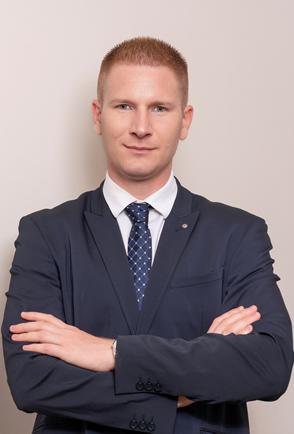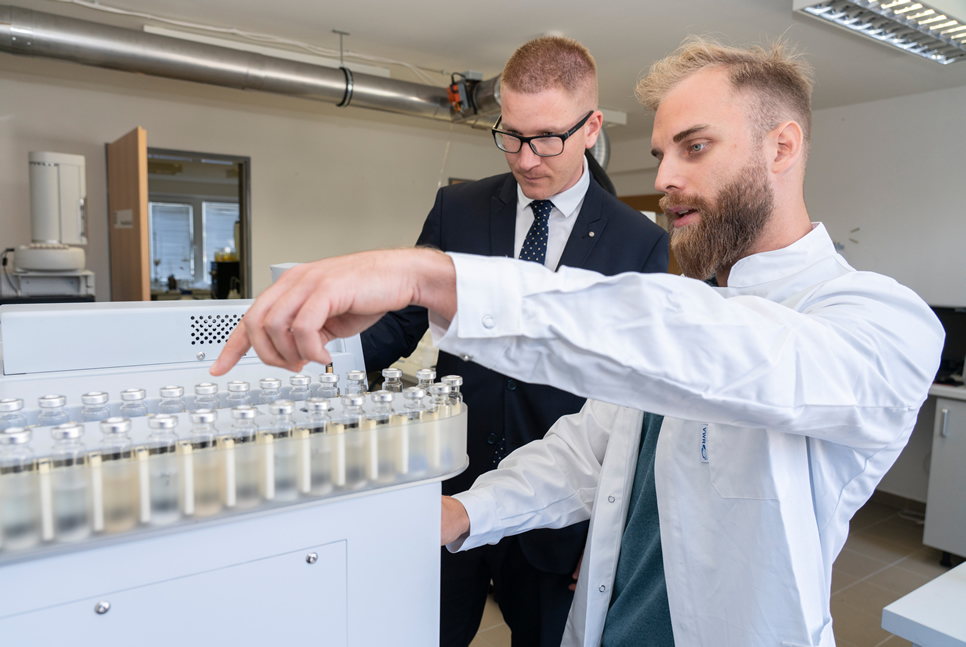
András Kovács, head of remediation department at Imsys Ltd.
The objective of Support of business RDI activities (VÁLLALATI KFI_16) is to promote the research-development and innovation activities of businesses. This can be achieved by best way through supporting domestic research, development and innovation activities which results in new marketable products, technologies with a high intellectual added value, furthermore the development of their prototypes. The source of funding is the National Research, Development and Innovation Fund.
Imsys Ltd. as an active company in the field of environmental protection has received HUF 131 million funding in this call for proposal. The name of the company is an acronym which comes from Integrated Management Systems. The company was established more than 25 years ago, and is fully owned by Hungarian entities. 35-40 employes are working at offices in Budapest and Debrecen and in their accredited testing laboratory in Jászberény.
- The activities of our company cover the full spectrum of services relating to environmental protection and our accredited analytical laboratory provides an adequate background to analyse environmental samples - says András Kovács, the head of remediation department at Imsys Ltd. - Our department is dealing with surveying contaminated areas, site investigations, intervention planning and remediation amongst others. We focus mostly on the contamination of groundwater and soil, but our department also does waste classification.
In the course of the 20th century, due partly to the underdeveloped technologies and partly to the lack of attention, the soil became contaminated on many sites in Hungary which caused also groundwater contamination as well. To survey this problem the National Remediation Programme was launched in 1996. According to professional experience usually the contamination is detected too late to make intervention effectively, as it is not visible. To prevent this, the survey of potentially contaminated areas started in 1996 covering former Soviet military headquarters, the sites of the Hungarian Army and former industrial areas. The remediation of many areas started back then and it has been continuing ever since.
- Unfortunately, due to the level of earlier technological knowledge and shortcomings in professional knowledge, several remediated areas became contaminated again because the contamination dissolute from the environment repeatedly - continues András Kovács. - This also shows that environmental industry continuously develops and permanent innovation is the only way to keep up with new technologies and new environmental challenges.
The most frequently used remediation technology is the “Pump and treat” method, when contaminated medium (soil, groundwater) is excavated/pumped, locally cleaned, then backfilled/injected to its original location or after excavation the medium is transported to a proper disposal site or hazardous waste without onsite treatment. But for example, if there is a plant operating on the area to be remediated, it is not possible to excavate the contaminated soil below the plant. In such cases, completely different methods need to be applied.
- The use of microbial methods does not disturb the daily activities of an operating plant. Microbiological degradation can be increased by various additives, and microbes do their job in the background nearly unnoticed- says the head of department for remediation - The supported project also aims to develop such systems. The first step is to investigate the concentration of various contaminants in the samples taken from the contaminated areas. Concurrently, we also describe the microbial characteristics of the given area. We want to see whether the strains of bacteria capable of degrading contaminants are present in the given area, which can be activated in order to be successful.
If the necessary microbes are present in the area, then laboratory tests are applied to inspect which additives are needed to intensify the degradation of contaminants in the most efficient way. Then the identified technology is also tested on site to see if it is feasible or not. Methodological guide can be compiled according to results of laboratory analysis and field tests for companies with similar activities to show the most effective way for remediation of contamination. Due to expectations of the company the microbial methods will become more widespread in remediation by the results of this project and the efficiency of remediations will also increase.







